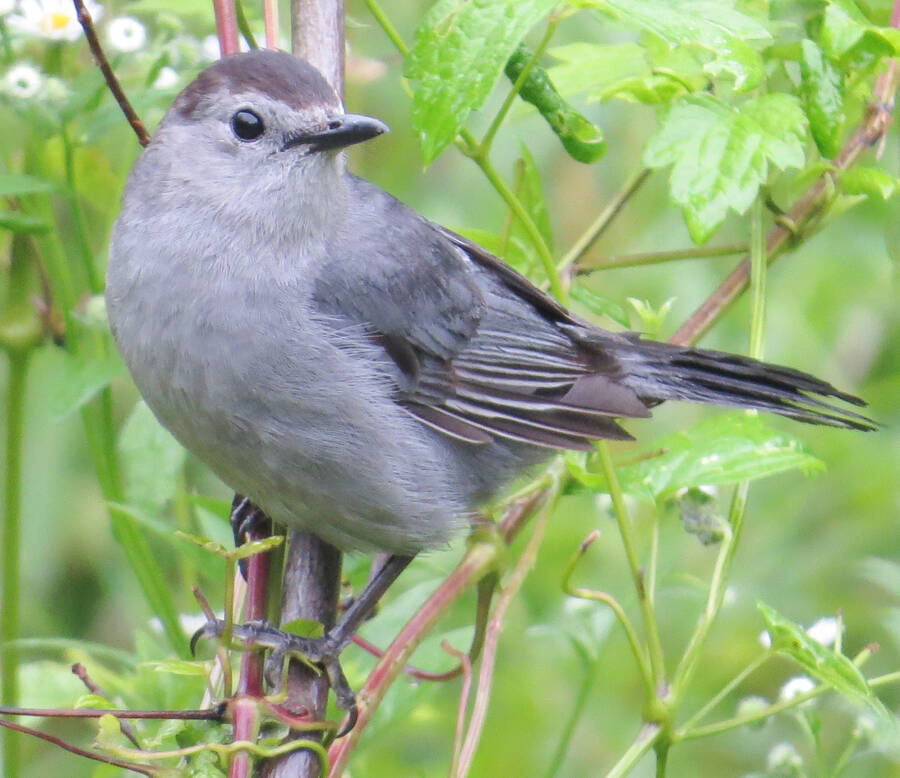
2022-08-17
Taking a closer look at the gray catbird
On July 30, I was offered the best opportunity for photographs of a gray catbird that I have had in a very long time.
It was an overcast, rainy day and I was doing some quick birding between showers. I was by the Mush-a-Mush river in Mahone Bay when a gray catbird hopped up into the open a few feet away from me. It stayed long enough for a number of perfect photos.
The gray catbird falls under the mockingbird family. Their nesting range is from British Columbia to Alberta, Saskatchewan, Manitoba, Ontario, Quebec, New Brunswick and Nova Scotia.
They also nest in Wisconsin, Washington, Oregon, Utah, Arizona, New Mexico, Oklahoma, Texas, Louisiana, Mississippi, Alabama and Georgia. They winter in Texas, Louisiana, Arkansas, Alabama, Georgia, South Carolina, North Carolina, Virginia, New York, and in Mexico and Panama and the West Indies.
The gray catbird is 20 to 23.13 cm with a wingspan of 27.5 to 30 cm. No other bird is slate gray with reddish undertail coverts. The gray catbird has a distinctive black cap and black tail.
Almost half of the food source for the gray catbird consists of insects, mainly of crickets, grasshoppers, beetles, and cankerworms and other smooth caterpillars, hairy caterpillars of gypsy and brown-tail moths, also ants, aphids, treehoppers, cicadas, sawflies, termites, large moths, and as well dragonflies, millipedes, centipedes, and spiders.
They sometimes will eat small trout. They also consume grapes, berries and at feeding stations cheese, bread, raisins, currants, peanuts, milk, cream, corn flakes, boiled potatoes, and soda crackers.
The gray catbird is a great mimic. I listened to one go through a repertoire of 25 different birds calls one day at Second Peninisula.
Cathy Hammond of Pinehurst reported seeing a red-tailed hawk that was perched on a telephone wire above her house on August 7. Her Merlin App also picked up the call of this hawk.
Roxanne Lantz watched a group of five common nighthawks on the evening of August 4. This bird is now threatened in Nova Scotia and at risk for the rest of Canada. A very long time ago I remember seeing a group of 500 of these birds coming in off the ocean in migration at Petite Riviere. I doubt I will ever see this again in my lifetime.
Tom Drew of Crousetown let me know that a second group of barn swallows recently fledged in his barn. The first nesting for the pair produced four young and in the second nesting three. Barn swallows were listed as threatened in Canada in 2011 and as well in Ontario. In Nova Scotia they are listed as endangered.
On August 4, Joanna Close sighted a yellow-bellied flycatcher and a yellow-breasted chat at the Spectacle Lake trail in the Halifax Regional Municipality. An odd sighting for this time of year was a snowy owl at Annapolis Royal as reported on August 5 by Richard Stern.
Ervin Olsen discovered an immature black tern at Cooks Beach, Yarmouth County. A sedge wren was heard calling on August 10 by Kathleen MacAulay at Pembroke Dyke. On this same date Zach Wile located a little gull at Tidnish.
You may reach me at (902) 693-2174 or email jrhbirder@hotmail.com.







